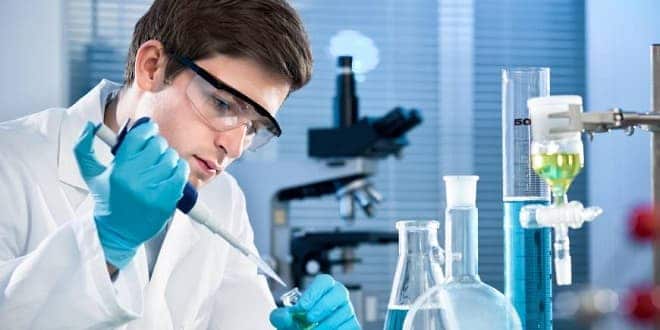Gıda Mikrobiyolojisi
-

Laboratory > Gram Stain
PURPOSE: The purpose of this experiment was to learn the gram staining method and to observe the characteristics of gram negative and gram positive microorganisms. THEORY: The gram stain is the most widely used staining procedure in bacteriology. It is called a differential stain since it differentiates between gram-positive and gram negative bacteria. Bacteria that stain purple with the gram staining procedure are termed gram-positive; those that stain pink are said to be gram-negative. The terms positive and negative have nothing to do with electrical charge, but simply designate two distinct morphological groups of bacteria. Gram-positive and gram negative…
-

Laboratory > Media and Sterilization
BACTERIOLOGICAL MEDIA AND STERILIZATION The purpose of this experiment is that to prepare media from nutrient agar for cultivating microorganisms. Bacteria have special requirements to grow. In order to see bacterial growth, a medium is needed. A MEDIUM is a nutritional environment for bacteria to grow. There are two primary forms of media: Liquid (Broth) and Solid (Agar). The most common solid medium used to grow bacteria in a microbiology lab is Nutrient Agar. The most common liquid medium used in the lab is Nutrient Broth. AGAR is derived from the extract of seaweed (an alga).Agar contains two main components: agarose…
-

Laboratory > Milk
PURPOSE: The purpose of this experiment was to investigate the coliform in milk and learn methylene blue reduction test and direct microscopic count method for milk. THEORY: The Standard Plate Count (SPC) procedure is used to determine the number of bacteria in a sample. In most cases the initial day SPC represents those bacteria that survive pasteurization (thermoduric), although gross contamination after pasteurization can cause high counts. The regulatory standard of < 20,000/ml is generally easily achieved. Most initial day bacteria counts are <500/ml while counts higher than 1000/ml suggest a potential contamination problem, either in the raw…
-

Laboratory > Pure Culture
PURPOSE The purpose of this experiment was to be demonstrated the techniques for transforming E. coli. THEORY: Bacterial growth on/in a medium is called a culture. Microbiology laboratories work with pure cultures. A pure culture is when there is only one microorganism growing in/on the medium. The transferring of a bacterium from a stock culture to either a solid or liquid medium is called inoculation. Inoculating a bacterium on/in a sterile medium ensures the purity of a culture. Properly transferring a bacterium without contamination is called an aseptic transfer. Many steps are taken to ensure that neither the bacterium…
-

Laboratory > Smear Preparation
SMEAR PREPARATION The preparation of a smear is required for many laboratory procedures, including the Gram-stain. The purpose of making a smear is to fix the bacteria onto the slide and to prevent the sample from being lost during a staining procedure. A smear can be prepared from a solid or broth medium. Below are some guidelines for preparing a smear for a Gram-stain. …
-

Laboratory > Water
PURPOSE In this experiment we have examined water by looking at its microbiological content.Our aim was to determine the number and kinds of microorganisms in water sample by applying different test methods. THEORY The presence of bacteria and pathogenic (disease-causing) organisms is a concern when considering the safety of water. Pathogenic organisms can cause intestinal infections, dysentery, hepatitis, typhoid fever, cholera, and other illnesses.So,water should be safe enough to be consumed and used.There are four types of water: · Spring or well water ( taken from well or spring and bottled with minimum treatment) · Specifically prepared drinking water (mineral content…
-

Laboratory > Yogurt
Fermentation of yoghurt is the most important part of the production.For fermentation process ,streptecoccus thermophilus and lactobacillus bulgaricus are added at 1:1 ratio as starter culture.There are also other bacterias in the product such as mold and yeast ,lactic acid bacteria etc. Detection of these microorganisms has an important role for safety of products. In this experiment we have used two kinds of yoghurt sample prepared in aceptic conditions and in open environment.We have examined the differences in the number of microorganisms in these samples.We have used different agars fort hat purpose.That is because,total lactic acid bacteria can…







